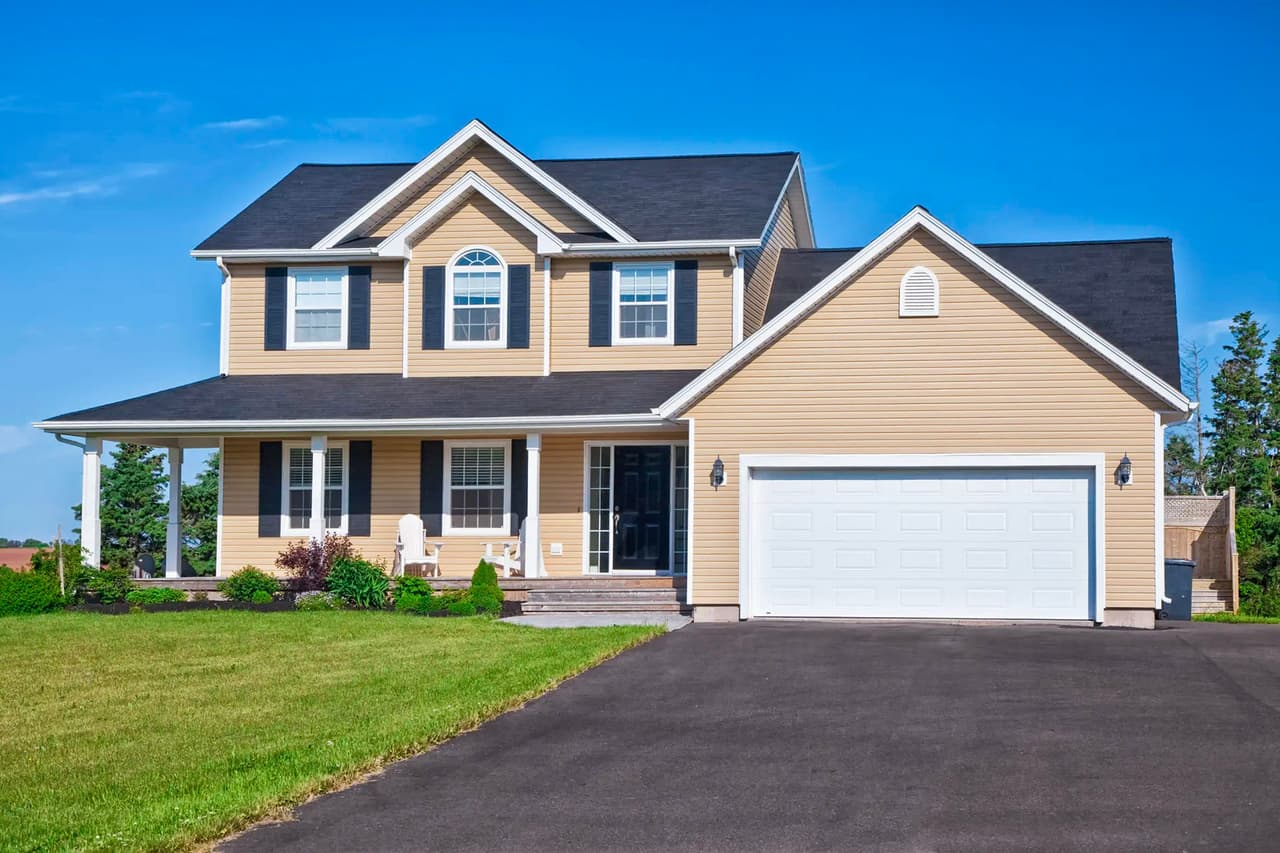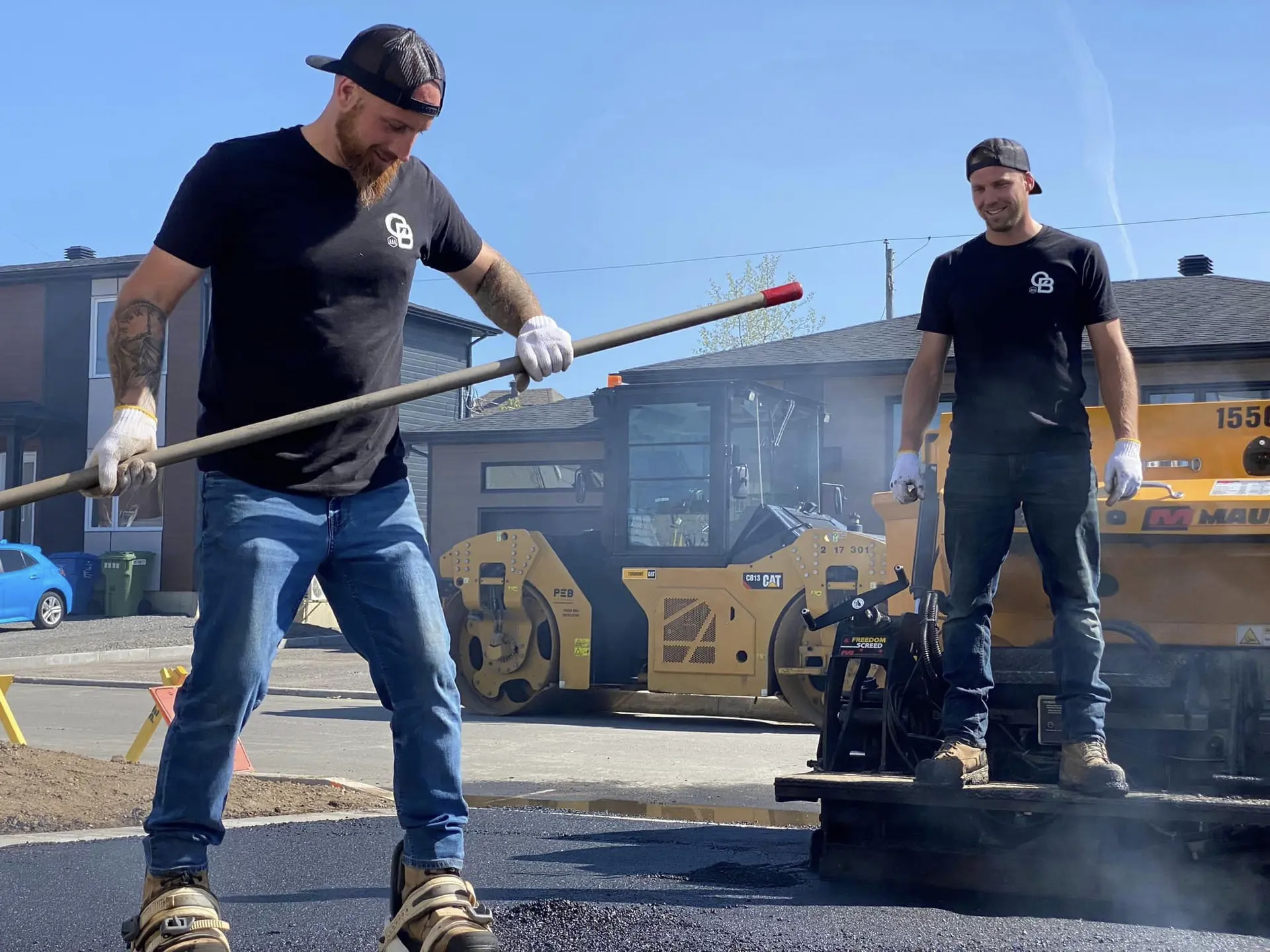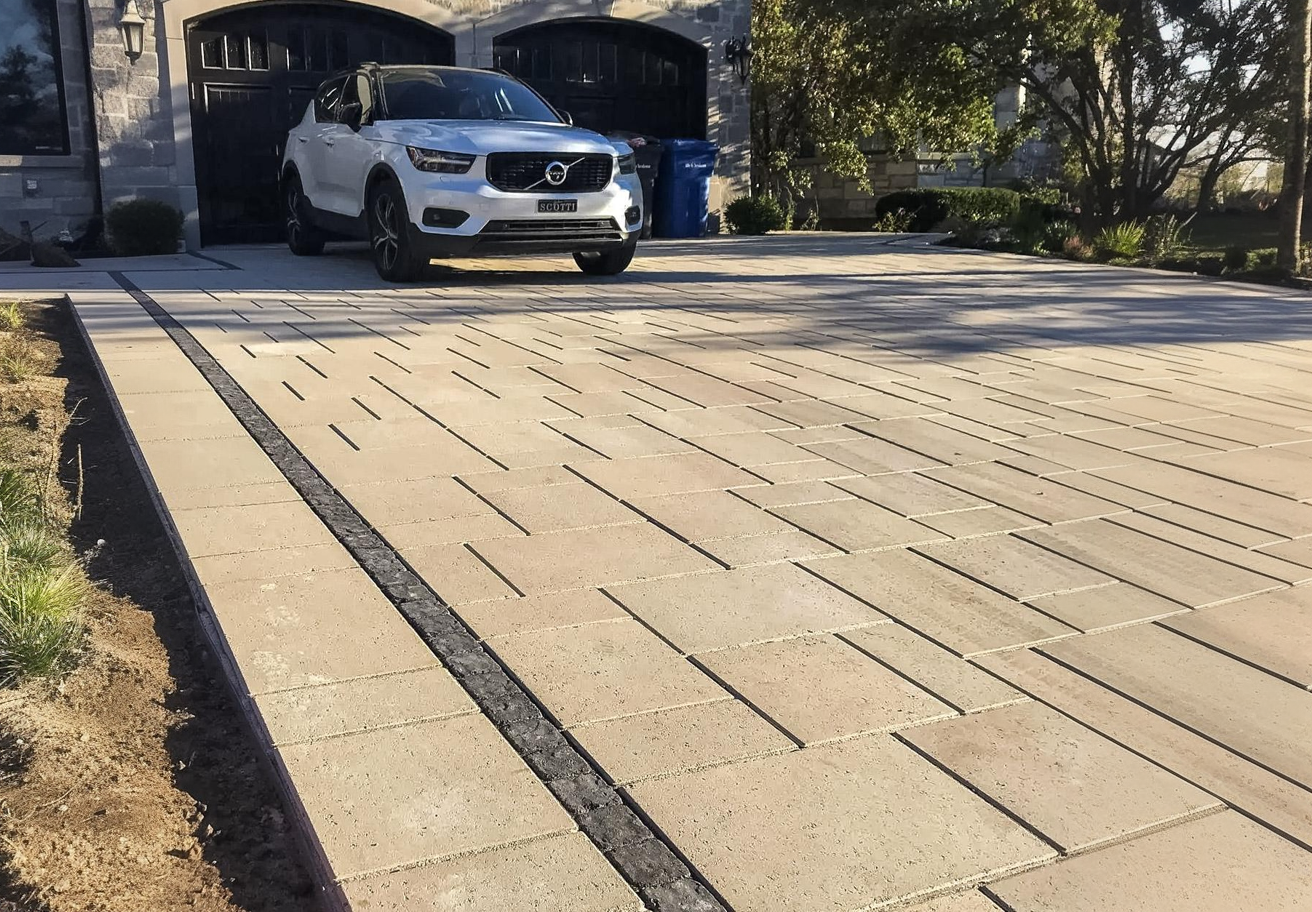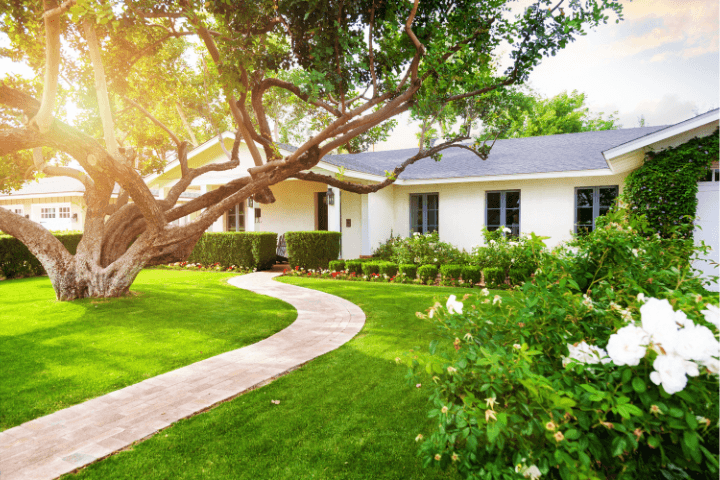Driveways – When do you need to repair, repave, or replace?
By Editorial Team
Updated on April 15, 2025

Your driveway is one of the first things people notice about your property. But when is it time to repave it? Are a few repairs enough, or should you consider a full replacement? Over time, weather, frequent vehicle traffic, and the harsh climate in Quebec can cause significant damage. So how do you know if it’s time to repave your driveway rather than just patching it up? Here are the most common signs to watch for.
Garage Entrance and Front Yard – Signs That It’s Time to Repave

Source : Pavé-Uni Willians Inc
1. Obvious Visual Clues
Cracks, Chipping, and Widespread Wear
Small cracks may appear naturally over time, especially after multiple winters. But when they become deep or numerous, it’s a sign of advanced wear. Freeze-thaw cycles, heavy vehicles, and the age of the surface are often the culprits. Leaving cracks open encourages water infiltration and accelerates deterioration.
Missing Pavers, Crumbling Edges
Loose or crumbling pavers not only ruin your driveway’s appearance but also pose a tripping hazard or may cause premature tire wear. This type of damage is often a sign that the original installation or sealant is failing.
Discoloration and Persistent Stains
Faded or stained paving may seem cosmetic, but it often indicates surface degradation from UV exposure, de-icing salts, or chemicals. Beyond a neglected appearance, this can make the material more vulnerable to cracking.
2. Concerning Structural Issues
Uneven Surface and Sagging
A driveway with dips or bumps becomes uncomfortable to walk or drive on. These irregularities are often caused by poorly compacted soil, shifting ground, or an unstable foundation. They should be addressed promptly, as they can worsen quickly.
Weakened or Unstable Base
If certain areas are sinking or appear wavy, it’s likely that the base has weakened. This could result from poor drainage, erosion, or low-quality fill materials.
Alligator Cracking
These network-like cracks, resembling alligator skin, usually indicate deep structural failure. They occur when the base no longer supports the surface properly — a full replacement is likely needed.
3. Drainage Problems That Shouldn’t Be Ignored
Standing Water Accumulation
If water lingers on your driveway after rain or snowmelt, it likely has a slope or drainage problem. Standing water seeps into cracks, destabilizes the base, and accelerates wear. It can also harm nearby house or garage foundations.
Frequent Potholes
Recurring potholes, even after repairs, point to underlying structural issues. This usually means the base is too damaged to bear weight, and patching alone won’t be enough.
4. When Repairs Aren’t Enough
Should you repair or replace?
It’s tempting to keep repairing damaged areas year after year. But if you’re noticing multiple types of damage — cracks, sagging, weakened base — a full repaving is a more cost-effective and long-lasting solution.
Clear Cases When Repaving Is Inevitable
Repairs are becoming more frequent and costly.
Damage is spreading to multiple sections of the driveway.
The surface is old and has lost its effectiveness and appearance.
The base structure is compromised.
What’s the best time to repave an asphalt, concrete, or paver driveway?

Source : Pavage et Excavation OB Inc
Ideal Season: Late Spring to Fall
Paving work should be done under favorable weather conditions. Late spring, summer, and early fall are ideal, with stable temperatures above 10°C, which allow for proper asphalt compaction or paver installation.
During the Quebec winter, the ground is frozen, preventing effective excavation or compaction. In early spring, melting snow makes the soil waterlogged and unstable. It’s best to wait until the ground is dry and cleared.
Plan Ahead to Avoid Emergency Repairs
If you notice signs of deterioration in the fall, plan the work for the following spring instead of waiting for winter to make things worse. You’ll also have more choice of contractors and avoid peak-season delays.
Watch for Off-Peak Times for Better Prices
Some times of the year — like early or late season — may offer better rates due to lower demand. This could be a great way to save money, provided the weather still cooperates.
What are the benefits of repaving your driveway?

Source : Gestion Carufel Inc
Repaving your driveway is a smart investment, both aesthetically and functionally. Here are the key benefits:
Increase in Property Value
A newly paved driveway instantly gives a neat, high-quality impression. It boosts your home’s curb appeal, which is crucial whether you're welcoming guests or potential buyers. A well-maintained driveway signals a well-managed property and may increase market value — especially if combined with landscaping or a premium surface like paver stones.
Daily Safety and Comfort
A damaged driveway can become hazardous: deep cracks, holes, and sagging increase the risk of falls, tire damage, and uncomfortable driving. A smooth, well-leveled surface ensures better grip for vehicles and safer walking. This is especially important in winter when snow and ice amplify surface defects. A safe driveway also helps prevent domestic accidents — particularly for households with children or elderly residents.
Long-Term Durability
Repaving isn’t just about looks — it’s about starting fresh with a solid foundation. A properly prepared base combined with quality materials (well-compacted hot asphalt, reinforced concrete, or leveled gravel) can reduce the need for future repairs. A new surface is also more resistant to external aggressors: freeze-thaw cycles, water infiltration, roots, de-icing salts, etc. The result? Less maintenance, lower long-term costs, and greater peace of mind.
How much does a driveway cost?
Choosing the right driveway material is also an investment in your property’s value and appearance.
Gravel is the most affordable option, costing $1 to $4 per square foot — ideal if you need a quick, low-cost solution. It’s especially popular for secondary residences, private roads, or large driveways.
Concrete and asphalt are worth considering for a more uniform, durable finish. Concrete is slightly more expensive but offers excellent resistance and low maintenance. Asphalt, on the other hand, provides a great balance between cost and performance, particularly for large surfaces.
Interlocking pavers are a premium choice, perfect for adding character to your property with a wide range of styles and textures to suit any taste.
Taking the time to compare your options will help you make an informed decision tailored to your needs and budget.
For more details, check out our Driveway Paving Cost Guide.
Driveway Paving FAQ
How much does it cost to asphalt a driveway?
The average cost to asphalt a driveway typically ranges from $3 to $10 per square foot, depending on the surface area, soil condition, job site access, and type of asphalt used. For a standard residential driveway, this often amounts to $2,500 to $7,500. A custom evaluation from a contractor is essential to get an accurate quote.
How is a driveway built?
Driveway construction involves several steps:
Site preparation (excavation, leveling, drainage)
Installation of a solid base (compacted gravel)
Application of the chosen surface (asphalt, pavers, gravel, concrete, etc.)
Finishing and final compaction
It’s recommended to hire a professional to ensure long-term durability and avoid issues like sagging, cracking, or poor drainage.
What is the cheapest material option for a driveway?
Gravel is usually the most economical option. It costs less than asphalt or concrete and is easy to install. However, it requires regular maintenance (leveling, weeding, adding gravel) and is better suited for properties where formal aesthetics are not the main concern.
Looking for something else?
Related articles
The latest industry news, interviews, technologies, and resources.

Editorial Team
•20 Sep 2024
Artificial turf is thought to be easier to maintain compared to natural grass and more durable. Myth or fact? How can you settle for one over the other? Also, what are the advantages and drawbacks of these two types of lusciously green surfaces? Keep reading to find out!

Editorial Team
•25 Jul 2025
Are you looking to benefit from a new, revamped landscape design, but are worried about getting it done right? If so, maybe hiring a professional landscaper is just the right call.

Editorial Team
•16 May 2024
Is your deck finally ready but you’re still on the fence about what kind of railing best suits what you’re looking for?

Amanda Harvey
•07 Nov 2023
As we all know too well, renovating your house or home can be extremely costly. Not everyone is able to spend the necessary funds on projects they may want or need to carry out.

Editorial Team
•17 Dec 2024
In a nutshell, buying a loft means wanting to benefit from a vast open space that has an undeniable industrial charm. Since this floor plan differs from an apartment or house, consider its specificities to plan and design its layout accordingly. Without further ado, here are a few loft layout recommendations.